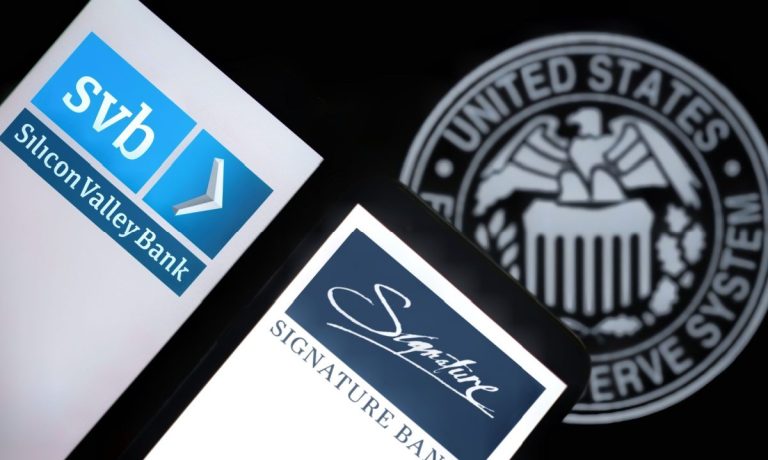
The old adage is that a butterfly flaps its wings, and eventually, there’s a hurricane, far away.
We may see the Butterfly Effect, as it’s known, play out in the U.S. economy at large. The collapses of Silicon Valley Bank and Signature Bank, which have catered to wealthy clients, may wind up setting forces in motion that pressure paycheck-to-paycheck consumers.
At first glance, the impact of those bank failures might seem to be muted. SVB and Signature, after all, had operated as regional players, and had catered to wealthy clientele. SVB was a stalwart within the tech community (and, by extension, California) and Signature had presence among real estate and law firms and well-to-do customers in New York.
But the banking sector continues to restructure day to day. At this writing New York Bank is reportedly buying a chunk of Signature for $2.7 billion. As detailed here, last week 11 banks poured $30 billion into First Republic Bank, another financial institution (FI) catering to high-net-worth individuals.
The ripple effect is likely to come as there’s a tightening of financial activity among the banks themselves — not just the regional players, but the community banks and the giants too. In times of uncertainty, a few things happen: Lending activity becomes a bit more muted, underwriting becomes tighter … and as a result, the loans that are extended become more expensive.
That means everything from credit card debt to mortgages to car loans will pinch household budgets even more. And that’s without any addition interest rate hikes from the Federal Reserve. The central bank, of course, is meeting this week, and looks set to push interest rates higher by a 0.25%. Bank chaos or not, inflation remains stubbornly high. The double whammy of banks’ caution and still-hawkish Fed policy will perhaps most immediately felt by paycheck to paycheck consumers with credit card debt on the books.
As PYMNTS data show, consumers are already finding it a challenge as they grapple with credit cards. Consumers with issues paying their monthly bills, on average, carry balances of 157% of their available savings. Nearly four in 10 (38.3%) of consumers living paycheck to paycheck with issues paying bills have already pulled money from their savings or investments to help manage their credit card debt load.
There’s another wrinkle in the mix — one tied to bank consolidation. As the weekend ebbed, on Sunday, Swiss banking giant UBS announced that it is buying rival Credit Suisse in a $3 billion government-supported deal. Consolidation, where bigger players snap up smaller, regional players would wind up concentrating deposits, and thus, in at least some sense, stifling competition (allowing consumers to find the products/rates that best meet their needs).
The wealthier clientele that have been key clients of the bigger banks? They’re not immune to the ravages of the macroeconomy, either. PYMNTS data have found that more than half of individuals earning over $100,000 annually said they are now living paycheck to paycheck. That’s up 9 percentage points from the end of 2021.
The chaos in the banking sector may have had its roots in high-tech Silicon Valley, but the butterfly effect will come to Main Street before too long.